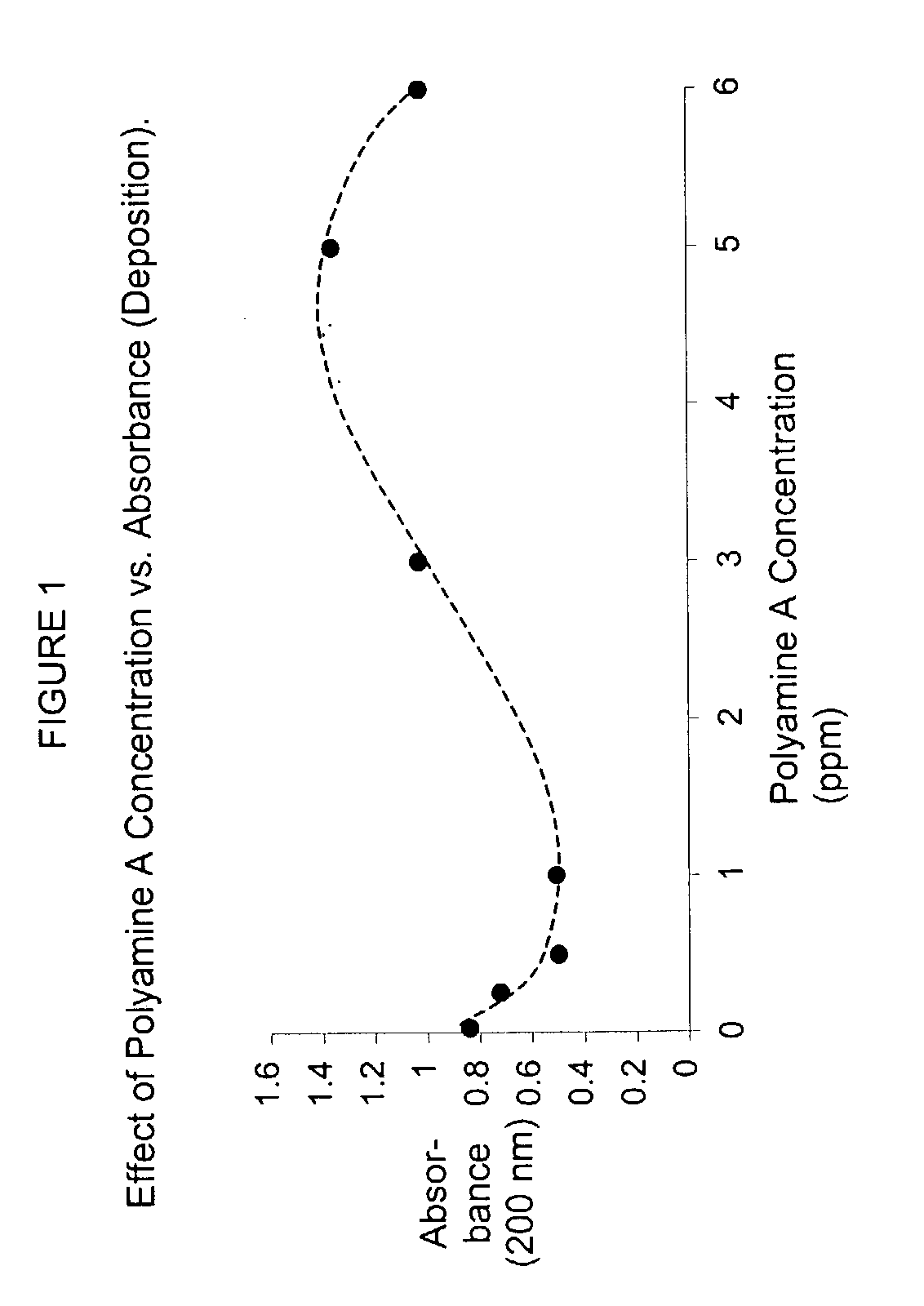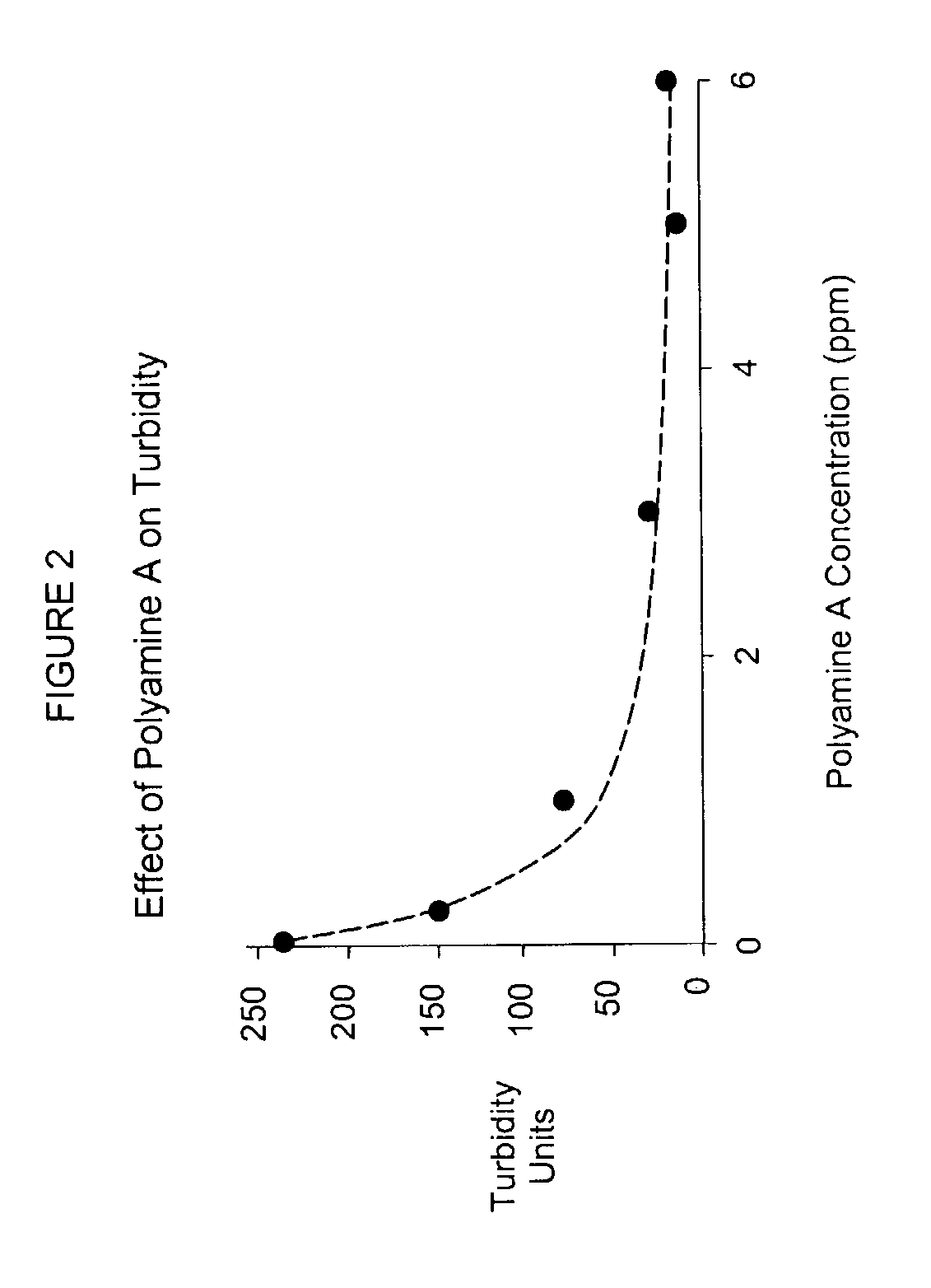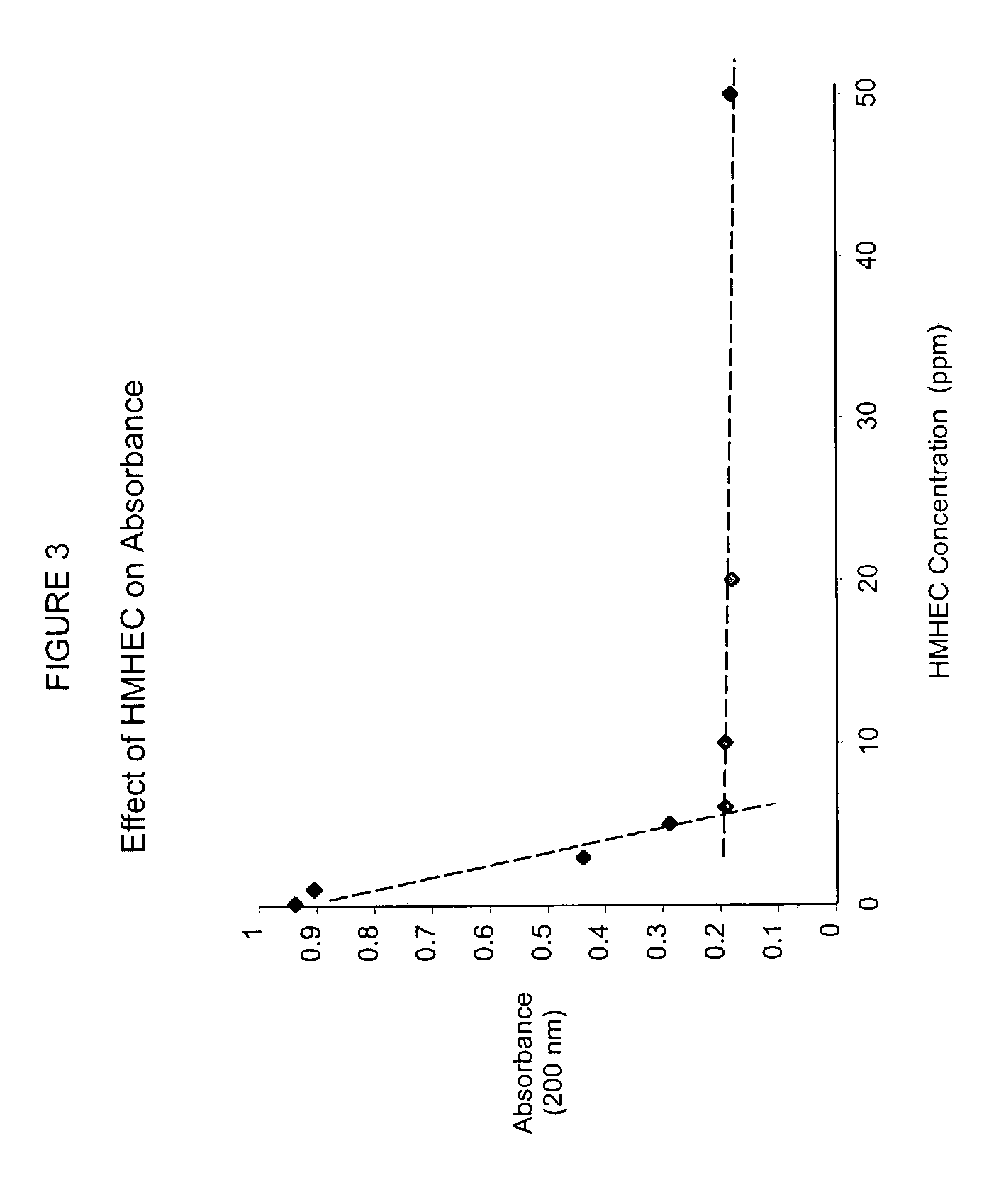Method for controlling pitch and stickies deposition
- Summary
- Abstract
- Description
- Claims
- Application Information
AI Technical Summary
Benefits of technology
Problems solved by technology
Method used
Image
Examples
example 1
[0048]This example demonstrates how the present invention controls pitch in a pulp suspension. Measurements were made on the amount of pitch depositing on a surface and the amount retained on the pulp. The two measurements demonstrate whether a treatment program controls pitch by decreasing the quantity of pitch depositing or decreasing deposition and cleaning of the system by retention of the pitch on the pulp. The most preferred treatment program results in a high percentage of deposit reduction as well as a high percentage of turbidity reduction.
[0049]A polypropylene film was immersed in a 0.5% (w / v) consistency kraft pulp slurry containing 350 parts per million (ppm) of a laboratory pitch emulsion. The pulp slurry was contained in a glass beaker and agitated provided by a magnetic stirring bar spinning at 300 rotations per minute (rpm). The glass beaker was maintained in a 50° C. water bath. The slurry (pH=6.0) contained 0.5% hardwood kraft fiber, 350 parts per million laborator...
example 2
[0062]In order to determine whether polyamines other than Polyamine A would be effective in combination with HMHEC, other materials were tested. As indicated in Table 3, Polyamine B, having a molecular weight of approximately 50,000, did not show a synergistic effect when combined with HMHEC.
[0063]
TABLE 3Effect of polyamine B on absorbance and turbidity values in the pitchdeposition assay.Polyamine BConcentrationHMHECPredictedActualPredictedActual(ppm)Concentration (ppm)AbsorbanceAbsorbanceTurbidityTurbidity100.380.3453106110.410.557676120.050.419918913−0.090.2612216214−0.160.231451691.54.5−0.170.2414710733−0.020.2398834.51.50.290.345760
example 3
[0064]Samples of whitewater, and thermo-mechanical pulp (TMP) were obtained from a newsprint mill in the southern part of the United States. The TMP was made from southern pine, a wood characterized by high extractives content. The sample of pulp was collected after hydrosulfite bleaching with and addition of alum. The white water also contained alum and other process chemicals. The TMP and whitewater samples were stored frozen and thawed shortly before the deposition tests were carried out. The TMP was diluted with white water to a consistency of 0.75%. Deposition tests were performed as described in Example 1 with the exceptions being the incubation period was increased from 45 minutes to 4 hours and the pH was 4.7. The results of those assays are present in Table 4 and FIGS. 7 and 8. As is evident in FIG. 7, except for four data points (indicated as unfilled diamonds), the predicted absorbance values were considerable larger than the actual measurements for all combinations. The ...
PUM
| Property | Measurement | Unit |
|---|---|---|
| Fraction | aaaaa | aaaaa |
| Fraction | aaaaa | aaaaa |
| Fraction | aaaaa | aaaaa |
Abstract
Description
Claims
Application Information
 Login to View More
Login to View More - R&D
- Intellectual Property
- Life Sciences
- Materials
- Tech Scout
- Unparalleled Data Quality
- Higher Quality Content
- 60% Fewer Hallucinations
Browse by: Latest US Patents, China's latest patents, Technical Efficacy Thesaurus, Application Domain, Technology Topic, Popular Technical Reports.
© 2025 PatSnap. All rights reserved.Legal|Privacy policy|Modern Slavery Act Transparency Statement|Sitemap|About US| Contact US: help@patsnap.com



